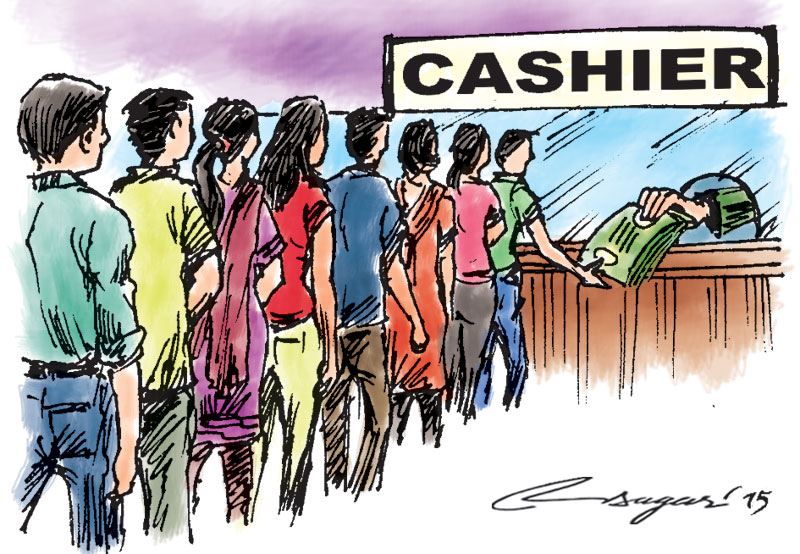Full employment: Implications for US
The basic point is that employment can be increased, and unemployment decreased, by removing barriers to job creation and reducing marginal tax rates. By contrast, increasing demand by prolonging easy monetary policy or expanding fiscal spending is likely to result in rising inflation rather than rising employment
In an important sense, the US economy is now at full employment. The relatively tight labor market is causing wages to rise at an accelerating rate, because employers must pay more to attract and retain employees. This has important implications for policymakers – and not just at the Federal Reserve.
Consider this: Average hourly earnings in May were 2.3% higher than in May 2014; but, since the beginning of this year, hourly earnings are up 3.3%, and in May alone rose at a 3.8% rate – a clear sign of full employment. The acceleration began in 2013 as labor markets started to tighten. Average compensation per hour rose just 1.1% from 2012 to 2013, but then increased at a 2.6% rate from 2013 to 2014, and at 3.3% in the first quarter of 2015.
These wage increases will soon show up in higher price inflation. The link between wages and prices is currently being offset by the sharp decline in the price of oil and gasoline relative to a year ago, and by the strengthening of the dollar relative to other currencies. But, as these factors’ impact on the overall price level diminishes, the inflation rate will rise more rapidly.
Accelerating wage growth implies that the economy is now at a point at which increases in demand created by easier monetary policy or expansionary fiscal policy would not achieve a sustained rise in output and employment. Instead, this demand would be channeled into higher wages and prices. There are of course other definitions of full employment.
Some would say that the United States is not at full employment, because 8.7 million people – about 6% of those who are employed – are looking for work. There are millions more who would like to work but are not actively looking, because they believe that there are no available jobs for people like themselves. And an additional 6.7 million are working part-time but would like to work more hours per week.
In many cases, these unemployed and underemployed individuals are experiencing real hardship. By that indicator, the US economy is not at full employment. But, for the Fed, it is, in the sense that excessively easy monetary policy can no longer achieve a sustained increase in employment. At the same time, other types of policies that change incentives or remove barriers can lead to increased employment and higher real incomes, without raising wage and price inflation. Consider, for example, the high rate of non-employment among men aged 25 to 54, a group too old to be in school and too young to retire. More than 15% of men in this age group are not employed. Among those in this age range who have less than a high school education, 35% are not employed. Programs to provide market-relevant education and training should be able to raise employment among this group.
Or consider the employment experience of men and women over age 65. This group is eligible for Social Security (pensions) and Medicare (health insurance), and the majority are retired. But experience shows that the decision to retire or to work fewer hours is influenced by the compensation that members of this group receive. And this amount partly reflects the fact that employed people who collect Social Security and Medicare are subject to the payroll tax that finances them. For many older workers, the choice is not whether to work, but how much. We now have less than full employment in the sense that the payroll tax encourages older workers to work fewer hours than they otherwise would.
The Affordable Care Act (“Obamacare”) also reduces hours worked, in two different ways. First, for some individuals, working fewer hours reduces incomes enough to entitle them to a larger government subsidy for health insurance. Second, some employers are being incented to reduce the number of working hours for individual employees, because, above a specified number, Obamacare imposes a larger burden on them.
Or consider minimum-wage legislation, which reduces employers’ willingness to hire low-skilled workers. As the minimum wage is increased, employers’ incentive to substitute equipment or more skilled employees strengthens. This reduction in the demand for low-skilled workers could be offset by taking into account the hourly equivalent of transfer payments when calculating the minimum wage.
For example, someone who receives $8,000 a year in transfer payments (such as food stamps, housing assistance, and the Earned Income Tax Credit) might be deemed to have received the equivalent of $4 an hour toward meeting the minimum wage. That individual’s combined income would be achieved with a lower cost to the employer, increasing the individual’s ability to find employment.
I could easily extend this list. The basic point is that employment can be increased, and unemployment decreased, by removing barriers to job creation and reducing marginal tax rates. Increasing demand by prolonging easy monetary policy or expanding fiscal spending is likely to result in rising inflation rather than rising employment.
Feldstein, Professor of Economics at Harvard University and President Emeritus of the National Bureau of Economic Research, chaired President Ronald Reagan’s Council of Economic Advisers from 1982 to 1984. © Project Syndicate, 2015






